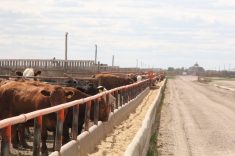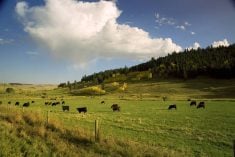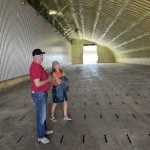Years ago, I heard a comment that the most underutilized resource in agriculture is people. The statement still rings true for me today and I believe our people are an area of huge potential.
For most of us, in one way or another, we are all part of a team, whether it be our work team, family, sports or community group. And how these teams function is changing as COVID continues to have an impact on us. We need to be intentional at strengthening the team and finding new and better ways to work together.
Read Also

Picking the most efficient cows to rebuild your cow herd
A new cow ranking system to help beef farmers and ranchers pick the most efficient cows as they rebuild their herds.
According to Douglas MacGregor in The Human Side of Enterprise, and Katzenbach and Smith in The Wisdom of Teams, there are common characteristics of effective teams:
- There is a clear unity of purpose.
- The group is self-conscious about its operations and how it functions.
- The group has set clear and demanding performance goals.
- The atmosphere tends to be informal, comfortable and relaxed.
- There are many discussions in which virtually everyone participates.
- People are free in expressing their feelings as well as their ideas.
- There is disagreement and this is viewed as good.
- Most decisions are made at a point where there is general agreement.
- Each individual carries his or her own weight.
- Criticism is frequent, frank and relatively comfortable.
- The leadership of the group shifts from time to time.
Management guru Simon Sinek refers to the Golden Circle as being a powerful tool of highly effective teams and organizations.

Those teams that examine the “why” they do what they do are more successful than those that only stay in the outer circles of the “how” and “what.” A ranching colleague shared his experiences of challenges working with his father when they were in the “how are we going to do things” circle. Once they were able to move to the “why,” there was much greater cohesiveness.
In holistic management, we develop a three-part holistic goal or context. This looks at the quality of life we want, what we need to produce or create to achieve that and our long-range vision for our family and operation, communities and landscape.
As we work to strengthen our teams, a relevant model that psychologist Dr. Jack Gibbs uses is of a pyramid. Trust and acceptance are at the bottom, then above that is communication. Next up is goals and at the top is control.

The theory is that if we have strong trust and acceptance as a foundation, communication will be effective, there will be clear and shared goals and very little need for control. But many of the groups we are part of are inverted triangles, without a strong foundation and with a need for broad control. These types are not very stable and any challenging time can topple them.
It goes without saying that communication is a major component of building teams. Khyentse Norbu, a Tibetan/Bhutanese lama, filmmaker and writer, is often quoted as saying: “We think that we have successful communication with others. In fact, we only have successful miscommunication without being aware of it.”
Here are some tips for better communication:
- Listen. To mindfully listen means to wait patiently for the other person to finish before we speak and keep our mind focused on the speaker.
- Practise non-judgement. There are always two sides to the story and neither one of them is necessarily right or wrong. Often there are only different perceptions.
- Show understanding. Respond with “I understand or I see what you mean.” At the end of the day, we all want to be understood. You can demonstrate you understand someone by relaying their feelings to them in your own words.
- Put yourself in their shoes. Try to imagine yourself in the experience of the other person.
- Be totally there. You all know what this means in the age of tech and business.
- The first response should not be personal. It needs to relate to the speaker.
- Let go of the results. It’s not a competition.
- Don’t harm. Try to remain kind and compassionate.
In the mid-’60s, Bruce Tuckman developed a group development model: forming, storming, norming, performing and later mourning.
Forming — coming together, getting to know each other, developing shared purpose and expectations.
Storming — conflict, pushing against boundaries.
Norming — resolving differences, appreciating each other’s strengths.
Performing — reaching a flow and working well, achieving goals.
Mourning — ending of groups or projects. This is difficult for some.
Recognizing the stage your team is at can be a useful strategy to move to the next level and hopefully reach a successful performing stage.
But there also needs to be a balance between production and team-building. When there is a lot of work to get done, it is hard for people to switch gears. Being mindful of timing is important. The middle of calving or harvest is not the best time to work on team development.
There are many activities we can do. A simple and very effective one is to begin meetings or sessions with an opening circle. Take a few minutes at the beginning to check in, do introductions if there are newcomers, and give people a chance to answer a question or say how they are doing. Make sure everyone has a chance to speak, with as much or as little as they wish. Questions can be posed that invite more reflection and sharing. The time spent is invaluable.
Team-building is really about relationship-building. It’s something that we continue to work on. Above all, remember to have fun.
















